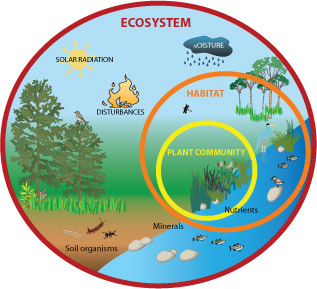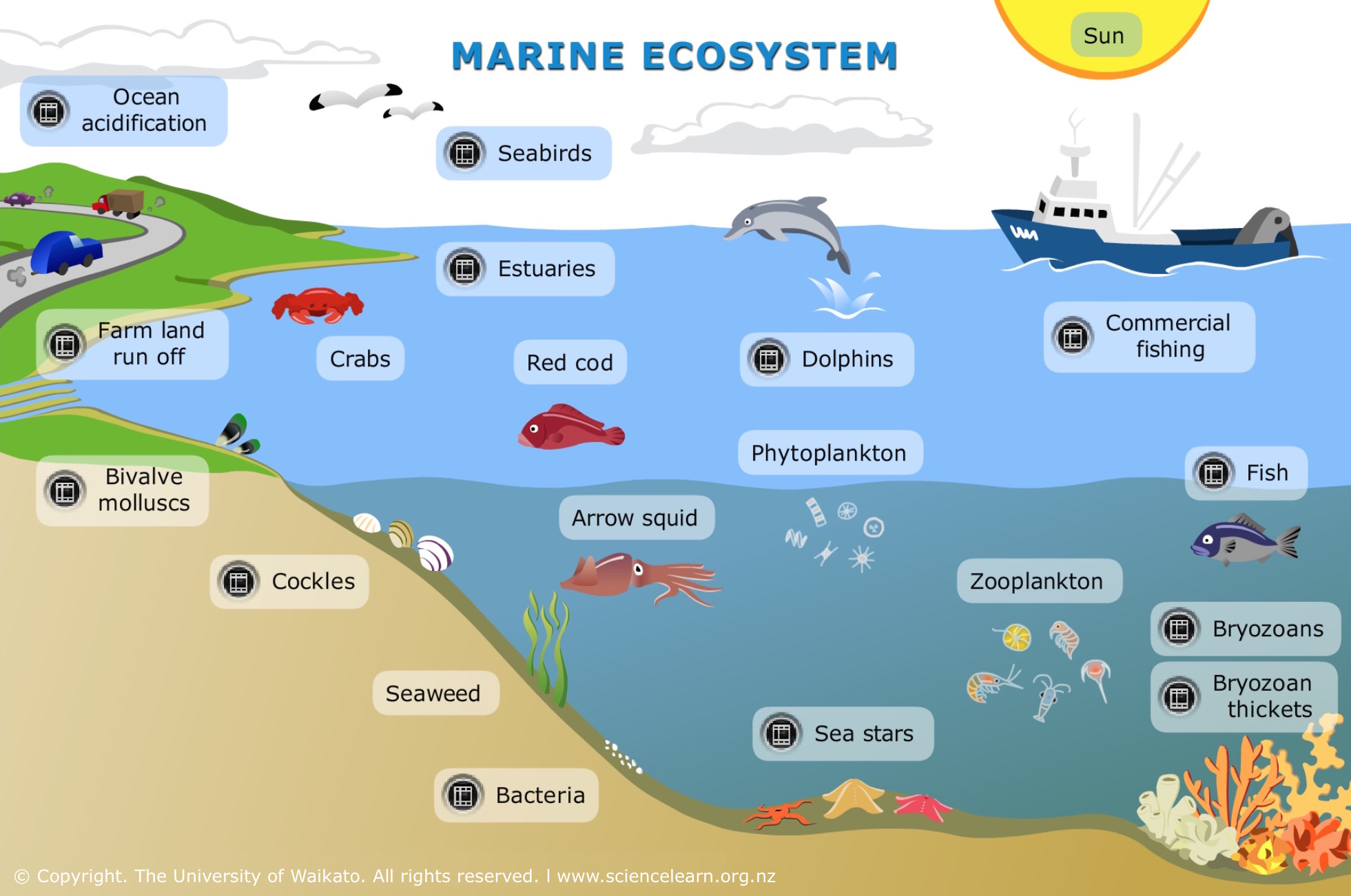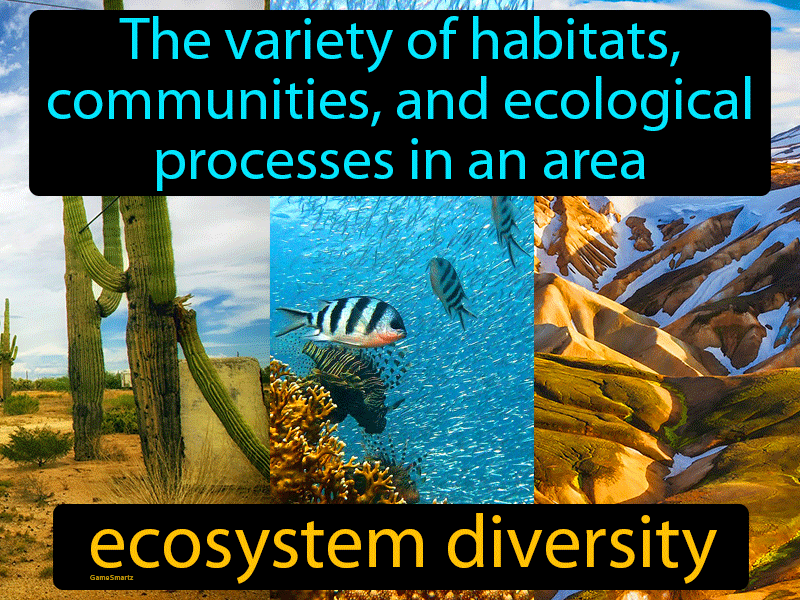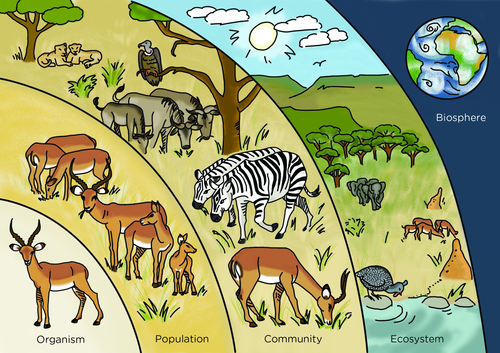Topic what is an ecosystem science: "Explore the fascinating world of ecosystem science, where we delve into the intricate networks of life and environmental interactions shaping our planet"s future."
Table of Content
- What are the key components studied in ecosystem science?
- Definition of Ecosystem Science
- Components of Ecosystems
- Types of Ecosystems
- Energy Flow and Nutrient Cycles
- Importance of Ecosystem Services
- YOUTUBE: What Is An Ecosystem - Ecology Environment Biology FuseSchool
- Human Impact on Ecosystems
- Conservation and Restoration Ecology
- Emerging Technologies in Ecosystem Science
- Case Studies in Ecosystem Science
- Future Directions in Ecosystem Research
What are the key components studied in ecosystem science?
In ecosystem science, researchers study a variety of key components that play a crucial role in understanding the dynamics of ecosystems. These components include:
- Living organisms: This includes plants, animals, fungi, and microorganisms that interact with each other and their environment.
- Physical features: The abiotic factors such as soil, water, sunlight, temperature, and topography that influence the ecosystem.
- Biogeochemical cycles: The cycling of nutrients and elements like carbon, nitrogen, and phosphorus through the living and non-living components of the ecosystem.
- Energy flow: How energy is transferred between different organisms in the ecosystem through food chains and food webs.
- Biodiversity: The variety of species present in an ecosystem and their interactions, which contribute to the stability and resilience of the system.
- Ecological interactions: The relationships between different species, including competition, predation, mutualism, and parasitism, that shape the ecosystem structure.
READ MORE:
Definition of Ecosystem Science
Ecosystem science is the interdisciplinary field that studies the complex interrelations between living organisms and their physical environment. It encompasses the analysis of biological, chemical, physical, and geological processes that connect organisms with their surroundings. This field aims to understand how ecosystems function, how they are affected by natural and human-induced changes, and how they can be managed or restored.
- Focuses on the dynamics and interactions within and among ecosystems.
- Includes the study of energy flows, nutrient cycling, and biodiversity within natural systems.
- Applies principles from biology, ecology, geography, chemistry, and physics.
- Emphasizes conservation, sustainable management, and the restoration of ecosystems.
- Addresses critical environmental challenges such as climate change, habitat destruction, and biodiversity loss.
Through its integrative approach, ecosystem science seeks not only to unravel the complexity of natural systems but also to provide solutions for preserving and enhancing ecosystem health and resilience in the face of global environmental changes.

Components of Ecosystems
Ecosystems are complex networks comprising biotic (living) and abiotic (non-living) components that interact through nutrient cycles and energy flows. Understanding these components is crucial for grasping how ecosystems function and sustain life.
- Biotic Components: These include all living organisms within the ecosystem, categorized into producers (autotrophs), consumers (heterotrophs), and decomposers (detritivores).
- Producers, like plants and algae, convert solar energy into food through photosynthesis.
- Consumers are organisms that eat other organisms, including herbivores, carnivores, and omnivores.
- Decomposers, including fungi and bacteria, break down dead organic matter, recycling nutrients back into the ecosystem.
- Abiotic Components: These are the non-living parts of an ecosystem, such as water, air, soil, sunlight, temperature, and minerals. They provide the essential physical environment and resources needed for living organisms to survive and thrive.
These components are interconnected, with energy flowing from the sun to producers and then to consumers, and nutrients cycling back to the soil through decomposers. This intricate web of interactions supports the diversity and productivity of ecosystems around the globe.
Types of Ecosystems
Ecosystems can be broadly categorized into two types: terrestrial and aquatic. Each type hosts a unique set of environments and life forms, adapted to their specific conditions.
- Terrestrial Ecosystems: These are land-based ecosystems, which include:
- Forests: Subdivided into tropical, temperate, and boreal (taiga).
- Grasslands: Including savannas, temperate grasslands, and prairies.
- Deserts: Characterized by low precipitation and can be hot or cold.
- Tundra: Found in the Arctic and Antarctic regions, with permafrost.
- Mountain: These ecosystems vary greatly with altitude.
- Aquatic Ecosystems: These are water-based ecosystems, divided into:
- Freshwater: Such as lakes, rivers, streams, and wetlands.
- Marine: Including oceans, seas, coral reefs, and estuaries.
Each ecosystem type supports distinct communities of organisms, adapted to their environments. The diversity within and between ecosystem types is vital for biodiversity, providing various habitats that support a wide range of species.

Energy Flow and Nutrient Cycles
The flow of energy and cycling of nutrients are fundamental concepts in ecosystem science, illustrating how ecosystems operate and sustain life. Energy flows through ecosystems in a one-way stream, from the sun to producers and then to consumers and decomposers, while nutrients cycle within the ecosystem, continuously reused and recycled.
- Energy Flow: Begins with solar energy captured by producers (autotrophs) through photosynthesis. This energy is then transferred to consumers (heterotrophs) and finally to decomposers, which break down organic matter, releasing energy back into the ecosystem.
- Nutrient Cycles: Essential elements like carbon, nitrogen, and phosphorus move through the biotic and abiotic components of an ecosystem. Producers absorb nutrients from the soil or water, consumers ingest these nutrients by eating other organisms, and decomposers release them back into the environment, completing the cycle.
- Carbon Cycle: Carbon is exchanged among the biosphere, pedosphere, geosphere, hydrosphere, and atmosphere of the Earth, crucial for the greenhouse effect and energy storage in ecosystems.
- Nitrogen Cycle: Nitrogen is converted into various chemical forms as it circulates among the atmosphere, terrestrial, and marine ecosystems, essential for the synthesis of amino acids in living organisms.
- Phosphorus Cycle: Phosphorus moves through the lithosphere, hydrosphere, and biosphere, vital for cell membrane formation and energy transfer in biological cells.
- Water Cycle: Water evaporates from surfaces, condenses in the atmosphere, and precipitates back to the surface, essential for transporting nutrients and maintaining ecosystem health.
Understanding these processes is vital for grasping how ecosystems function, the role of organisms within ecosystems, and the impacts of human activity on natural cycles.
Importance of Ecosystem Services
Ecosystem services are vital for human well-being and the planet"s health, providing essential benefits that we often take for granted. These services play a critical role in supporting life, maintaining ecological balance, and contributing to our economy.
- Provisioning Services: These include the supply of food, fresh water, wood, fiber, and genetic resources. They are the products obtained from ecosystems that are essential for survival and economic activities.
- Regulating Services: Ecosystems regulate climate, floods, disease, wastes, and water quality among other factors. These services help to mitigate environmental hazards and provide protection against natural disasters.
- Cultural Services: Natural environments provide cultural, aesthetic, spiritual, and educational benefits, enhancing our well-being and community life.
- Supporting Services: These are necessary for the production of all other ecosystem services, including soil formation, photosynthesis, nutrient cycling, and water cycling. They maintain the conditions for life on Earth.
The importance of ecosystem services extends beyond environmental health, influencing economic policies, development strategies, and conservation efforts. Recognizing and preserving these services is crucial for sustainable development, ensuring that future generations can enjoy the natural resources and beauty our planet offers.

What Is An Ecosystem - Ecology Environment Biology FuseSchool
Ecosystem: Dive into the vibrant world of ecosystems in this captivating video, where you\'ll discover the delicate balance between various organisms and their environment. Explore the beauty and complexity of nature at its finest. Science: Embark on an awe-inspiring journey through the realm of science in this video that showcases the wonders of the natural world. From breakthrough discoveries to mind-boggling experiments, prepare to be amazed and inspired by the power of scientific exploration.
Human Impact on Ecosystems
Human activities have significantly altered the Earth"s ecosystems, impacting biodiversity, climate, and natural processes. Understanding these impacts is crucial for developing strategies to mitigate negative effects and promote environmental sustainability.
- Land Use Change: Deforestation, urbanization, and agriculture alter habitats, reduce biodiversity, and disrupt ecosystem services.
- Pollution: Air, water, and soil pollution from industrial, agricultural, and urban sources contaminates ecosystems, affecting both wildlife and human health.
- Climate Change: Emissions of greenhouse gases from fossil fuel combustion lead to global warming, altering ecosystems through changes in temperature, precipitation patterns, and sea levels.
- Overexploitation: Overfishing, hunting, and harvesting at rates exceeding natural replenishment lead to the depletion of resources and loss of species.
- Invasive Species: Introduction of non-native species can outcompete, prey on, or bring diseases to native species, disrupting ecological balances.
- Resource Depletion: Unsustainable extraction of natural resources, such as minerals, water, and forests, compromises ecosystem health and resilience.
Addressing human impacts on ecosystems involves adopting sustainable practices, enhancing conservation efforts, and fostering a global commitment to environmental stewardship. By recognizing our interconnectedness with nature, we can work towards restoring ecosystem health and ensuring a sustainable future for all species.
What is an Ecosystem
In this video I go over what an ecosystem is and I show several examples including microecosystems,meso ecosystems and ...
Conservation and Restoration Ecology
Conservation and restoration ecology are critical fields of study that address the degradation of ecosystems and seek to preserve biodiversity and ecosystem services. These disciplines play a crucial role in reversing damage caused by human activities and natural processes, aiming to restore ecosystems to their natural state or improve their capacity to provide essential services.
- Conservation Ecology: Focuses on protecting natural habitats, preserving biodiversity, and preventing the extinction of species. It involves strategies such as establishing protected areas, implementing sustainable resource management practices, and enforcing laws and policies that protect the environment.
- Restoration Ecology: Aims to repair damaged ecosystems through active human intervention. Techniques include reforestation, invasive species removal, wetland restoration, and reintroduction of native species. The goal is to restore ecological processes, biodiversity, and services to degraded areas.
Both conservation and restoration ecology emphasize the importance of understanding ecological principles and applying them to manage and restore ecosystems effectively. By integrating these approaches, we can enhance ecosystem resilience, promote sustainability, and ensure the well-being of current and future generations.
Emerging Technologies in Ecosystem Science
Advancements in technology are revolutionizing the field of ecosystem science, offering new insights into ecological processes and enhancing conservation efforts. These emerging technologies enable precise monitoring, analysis, and management of ecosystems on an unprecedented scale.
- Remote Sensing and Satellite Imaging: Provides comprehensive data on land use changes, vegetation cover, and habitat fragmentation, facilitating global environmental monitoring.
- GIS and Spatial Analysis Tools: Allow for the mapping and analysis of ecological data, improving our understanding of spatial patterns and processes in ecosystems.
- Drones and UAVs: Offer a versatile and cost-effective means of collecting high-resolution data on wildlife populations, plant health, and environmental changes.
- Environmental DNA (eDNA): Enables the detection of species presence and biodiversity assessments in water bodies without the need for physical sampling, enhancing monitoring of aquatic ecosystems.
- Machine Learning and Big Data Analytics: Aid in the analysis of vast amounts of environmental data, predicting ecological trends, and identifying conservation priorities.
- Internet of Things (IoT) Sensors: Provide real-time data on environmental conditions, helping to monitor ecosystem health and the impacts of climate change.
These technologies are pivotal in advancing ecosystem science, offering novel approaches to conservation, and fostering a deeper understanding of the Earth"s complex ecological systems.
Case Studies in Ecosystem Science
Case studies in ecosystem science provide invaluable insights into the practical application of ecological principles, offering lessons on the management, conservation, and restoration of ecosystems. They highlight the successes and challenges faced in real-world scenarios, fostering a deeper understanding of ecological dynamics and human impacts on natural environments.
- Restoration of Wetlands: Examines the efforts to restore natural water filtration systems, enhance biodiversity, and mitigate flooding in degraded wetland ecosystems.
- Forest Conservation and Management: Focuses on strategies for sustainable forestry, habitat preservation, and biodiversity conservation in forest ecosystems worldwide.
- Urban Ecology Projects: Highlights the integration of green spaces in urban planning, promoting ecosystem services such as air purification, cooling, and recreational spaces in cities.
- Marine Protected Areas: Explores the establishment and management of marine reserves to protect biodiversity, support fisheries management, and preserve coral reef ecosystems.
- Agricultural Land Use and Biodiversity: Investigates the impact of farming practices on ecosystem services, soil health, and biodiversity, along with sustainable agricultural practices.
These case studies underscore the complexity of ecosystems and the importance of informed, science-based approaches to their stewardship. By learning from these examples, we can better appreciate the intricacies of ecosystem science and the critical role it plays in sustaining life on Earth.

READ MORE:
Future Directions in Ecosystem Research
The frontier of ecosystem science is expanding rapidly, embracing innovative methodologies and interdisciplinary collaborations to address pressing environmental challenges and uncover new insights into the functioning of Earth"s ecosystems.
- Integrating Big Data and AI: Leveraging the power of big data analytics and artificial intelligence to process and interpret the vast amounts of data generated by environmental monitoring efforts, improving predictions of ecological change.
- Climate Change Mitigation and Adaptation: Focusing on understanding the impacts of climate change on ecosystems and developing strategies to mitigate these effects while adapting to new environmental realities.
- Urban Ecology: Expanding research into urban ecosystems to better understand how to integrate biodiversity and ecosystem services into urban planning and development.
- Restoration Ecology: Advancing techniques in restoration ecology to rehabilitate degraded landscapes, focusing on restoring ecosystem functions and services rather than simply replanting native species.
- Conservation Genomics: Applying genomics to conservation efforts to preserve genetic diversity, assess the health of populations, and inform the management of species and habitats.
- Global Biodiversity Monitoring: Developing global networks for biodiversity monitoring to track changes in species distributions, abundance, and ecosystem health in real-time.
- Social-ecological Systems: Deepening the study of social-ecological systems to understand the complex interactions between human societies and natural ecosystems, aiming to promote sustainability and resilience.
As ecosystem science advances, it will continue to play a crucial role in guiding conservation efforts, informing policy, and ensuring the sustainable management of natural resources for future generations.
"Diving into ecosystem science unveils the intricate web of life and its processes, guiding us towards sustainable living and conservation. Explore this fascinating field to discover how you can contribute to Earth"s future."








